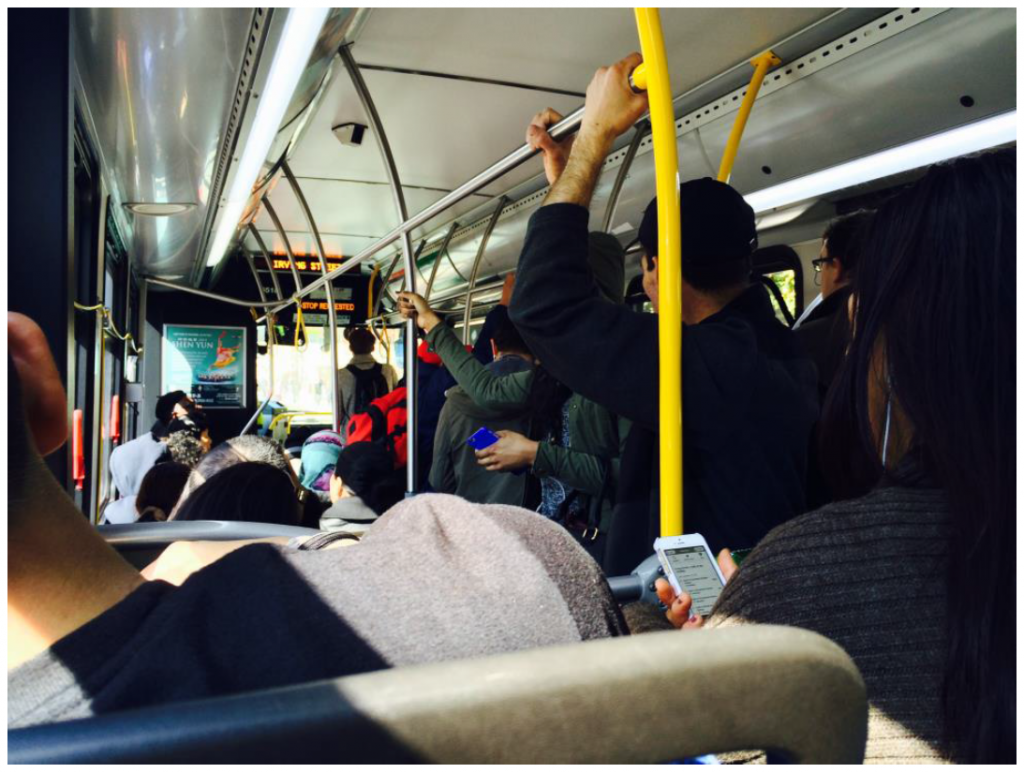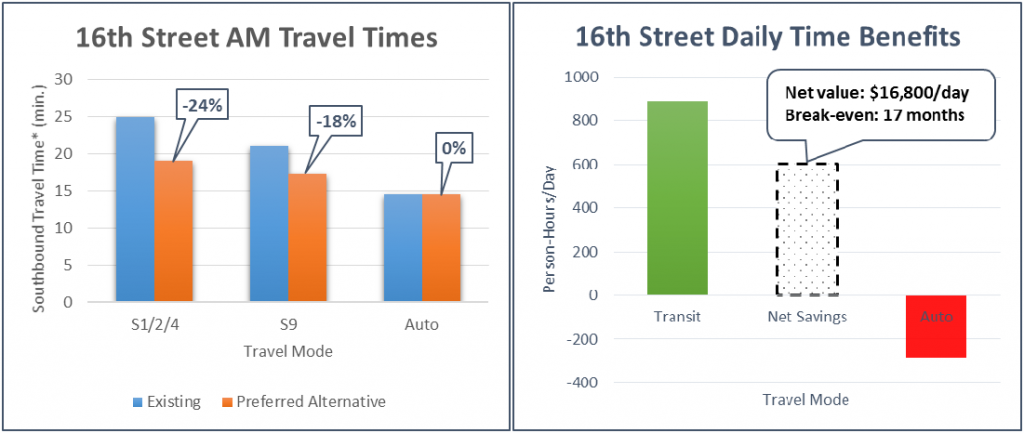16th Street Plan Offers Big Benefits, Great Value
DDOT’s 16th Street transit plan will benefit Metrobus riders, drivers and taxpayers alike and could “break even” in just a year and a half.
We know the problems with buses on 16th Street NW: overcrowding, slow speeds, lengthy boarding times, and bunched buses. While both the District Department of Transportation (DDOT) and Metro have made several small but important improvements in the past two years to improve traffic flow and increase bus capacity on 16th Street, both agencies realize that more needs to be done. Now, after a year of detailed study in partnership with Metro, DDOT has developed a set of recommendations (PDF) that will save time and improve the customer experience in the coming years. As an added bonus, it comes with a relatively cheap price tag, yielding great value for taxpayers.
Bus Lanes, Off-Board Fare Payment, and Everything In Between
The recommendations include:
- Peak period, peak direction (7-10AM southbound, 4-7:30PM northbound) bus lanes with automated enforcement to help buses bypass congestion
- Simpler route patterns, improved street management and transit signal priority to reduce bus bunching and improve reliability
- Expanded MetroExtra-type service with fewer stops to improve travel times
- Off-board fare payment and all door boarding to reduce dwell times at busy stops
DDOT and Metro will implement the project in phases over the next several years, although improvements like new low-floor buses and transit signal priority are well underway.
Big Benefits and Low Costs Mean “Breaking Even” in just a Year and a Half
Despite prioritizing street space for buses (carrying half the people with just 3% of vehicles), drivers should expect minimal delays as cars that now often weave among buses are expected to form a more organized traffic flow (PDF) and reduce vehicle conflicts. What’s more, all of these improvements come with a price tag of only $6 million. The combination of up to 6 minutes of travel time savings per bus trip for thousands of S-line riders, minimal travel time increases for 16th Street drivers, and relatively low capital costs means that the value of the net travel time benefits could “break even” in just 17 months. Of course the project won’t literally pay for itself, but this does mean that the cumulative value of net travel time savings is expected to equal the estimated $6 million just a year and a half after the project is completed. Pretty impressive stuff!
What are your thoughts about the project?




Recent Comments